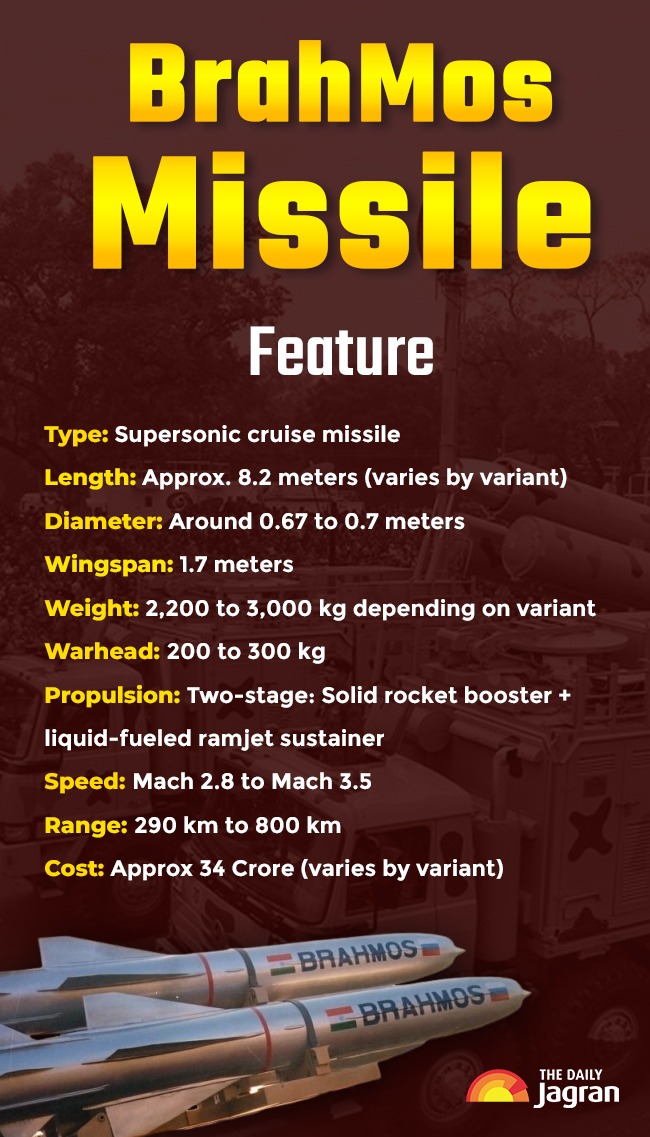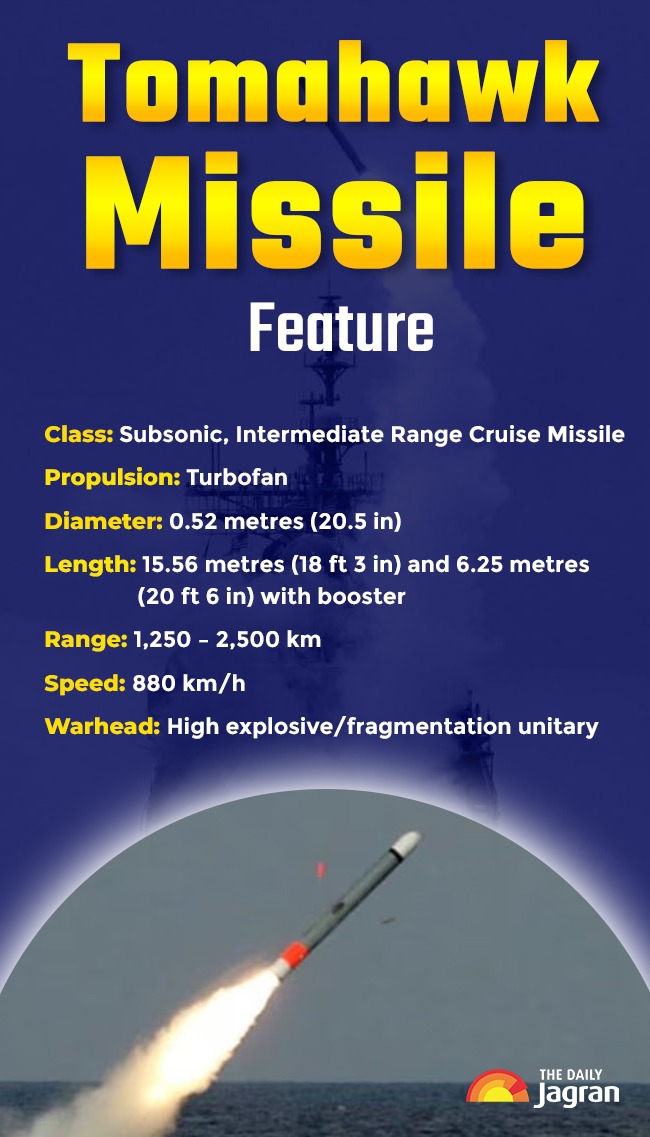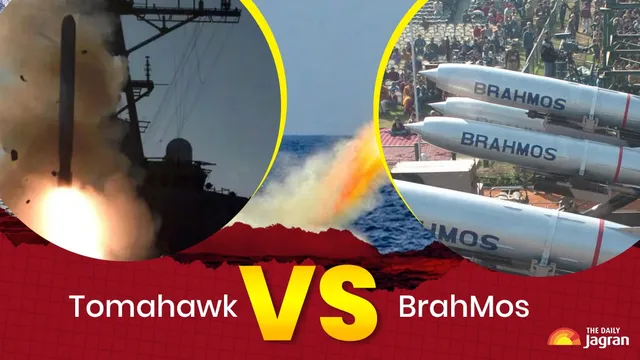- By Soumyaroop Mukherjee
- Sat, 18 Oct 2025 05:48 PM (IST)
- Source:JND
India showcased its military might when the Indian armed forces unleashed hell on Pakistan-based terror camps in Pakistan-Occupied Kashmir and Pakistan, under Operation Sindoor, launched in retaliation for the dastardly Pahalgam terror attack, which resulted in the death of 26 people.
One of the major components of India’s precision strikes was the indigenously developed BrahMos missiles, designed by the state-owned BrahMos Aerospace in collaboration with Russia. The BrahMos missile can hit targets as far as 500 kilometres.
The BrahMos missile is well compared to the US’ much sought-after Tomahawk missile. Both Tomahawk and BrahMos are long-range, precision-guided cruise missiles. Both can hit targets with exceptional accuracy and can be launched from multiple platforms, including ships, submarines and land-based launchers.
Let us take a look at how the US’ Tomahawk and India’s BrahMos missiles fare against each other.
BrahMos Missile: Features
- BrahMos is a supersonic missile, travelling at speeds of Mach 2.8 to 3.0. The supersonic speed ensures a minimal reaction time for enemy defence systems and significantly enhances strike effectiveness. The missile has a range of 290 km to 500 km for the basic variant, while a range of 800 km is there for the advanced variant. Currently, hypersonic variants are being developed with a range of 1,500 km.
- It is a two-stage missile with a solid propellant booster engine in Stage I, which helps it reach supersonic speed and then separates. In Stage II, the liquid ramjet takes the missile to a speed of 2.8 Mach in cruise mode.

- The missile also has a flexible launch platform and can be launched from any of the following vectors: a) Land-based mobile launchers, b) Naval vessels and submarines, c) Aircraft (BrahMos-A variant), d) Underwater platforms.
- With a Circular Error Probable (CEP) of only a meter, the BrahMos missile comes with deadly precision, unparalleled in modern warfare. The pinpoint accuracy of BrahMos makes it a deadly attack weapon for
- The missile works on the ‘Fire and Forget’ principle, calculating the best course automatically, which can inflict the maximum damage.
- The missile’s destructive power is enhanced due to the large kinetic energy, which is unleashed upon impact. The cruising altitude is 15 km, while the terminal altitude is as low as 5 km. It carries a conventional warhead up to 200 kg.
ALSO READ: Cab Driver Killed In Brutal Late-Night Attack In Gurugram's Udyog Vihar
Tomahawk Missile: Features
- Tomahawk cruise missiles are the precision-strike missiles developed by Raytheon for the United States. The missiles are classified in the subsonic category and can be used in all weather.
- Like BrahMos, Tomahawk missiles can also be launched from different vectors: ships, submarines and ground launchers, travelling distances of up to 1,600 km to 2,400 km (1,000 to 1,500 miles).
- The missile has a circular error probability of up to five meters, giving it pinpoint accuracy.
- The missile comes with the following guidance systems: GPS, inertial navigation, TERCOM (terrain contour matching) and DSMAC (digital scene matching area correlation), helping it to fly at low altitudes, thereby evading radar detection.

- Each Tomahawk missile carries a price tag of roughly Rs 10.8 crore (USD 1.3 million), depending on the version and year of production.
- Currently, the American armed forces use the Tomahawk Block V from 2020, an upgrade from the Block IV. The Block V comes with the following variants: Block V, Block Va and Block Vb.
- The Tomahawk was developed in the 1980s and first deployed in modern combat in the 1991 Gulf War in Operation Desert Storm. Since then, the missiles have been flight-tested more than 550 times and used in combat over 2,350 times, including the mission against the Houthi rebel sites in Yemen.

